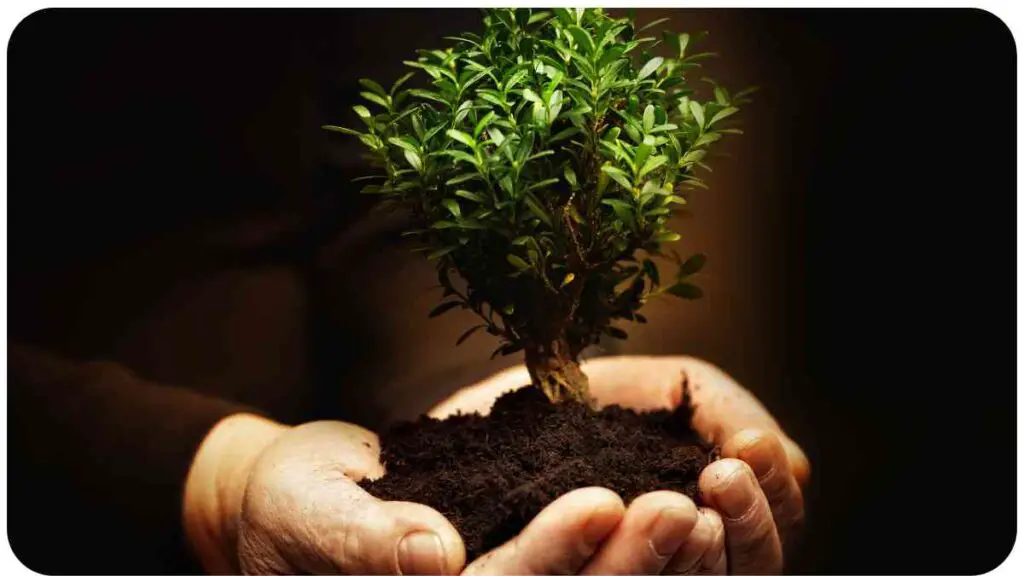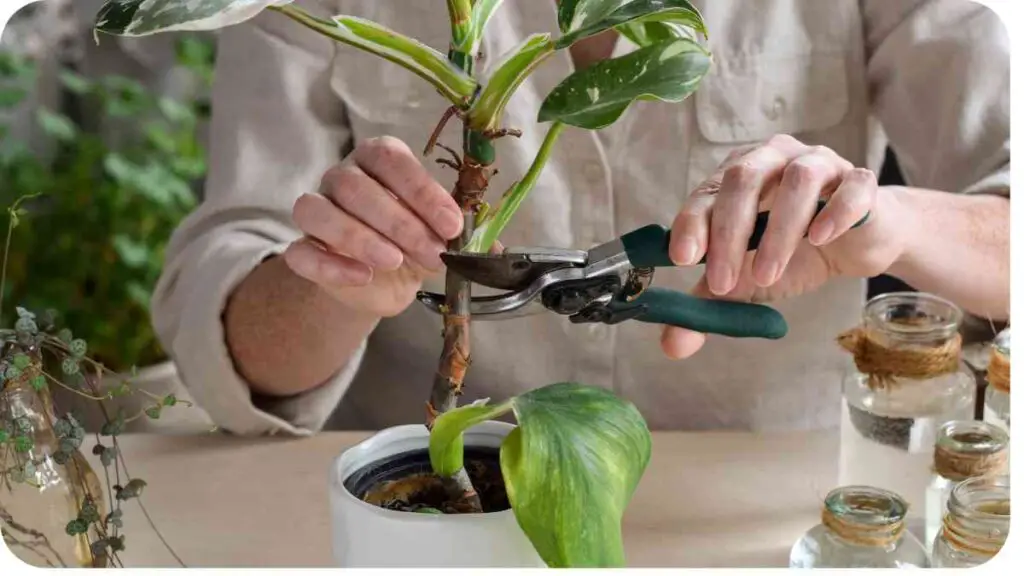Have you ever wondered why trimming your plants seems to make them grow stronger? In this article, we’ll explore the science behind this phenomenon and provide practical insights into how you can use trimming to promote healthier, more robust growth in your garden or indoor plants.
| Takeaways |
|---|
| Trimming plants redirects resources towards new growth areas. |
| Hormonal responses to trimming, such as increased branching, promote growth. |
| Proper pruning techniques can improve air circulation and light penetration. |
| Avoid common mistakes like over-pruning and neglecting tool maintenance. |
| Incorporate expert tips, such as observing growth patterns, into your pruning routine. |
2. Understanding Plant Growth

Before diving into the benefits of trimming, it’s essential to understand the basics of how plants grow. Plants rely on a complex interplay of hormones, nutrients, and environmental factors to thrive. By harnessing our understanding of these processes, we can optimize plant growth and vitality.
Pruning is essential for plant growth, stimulating new branches and healthier foliage. Proper techniques unlock the growth-boosting potential of pruning, ensuring robust plants.” Unlocking Growth Boosting Power Pruning also enhances overall plant structure and appearance, promoting a thriving garden ecosystem.
3. Benefits of Trimming Plants
Table: Comparison of Trimmed vs. Untrimmed Plants
| Aspect | Trimmed Plants | Untrimmed Plants |
|---|---|---|
| Growth Rate | Stimulated growth due to redirected resources | Limited growth potential due to competing branches |
| Health | Improved air circulation and light penetration | Risk of disease and pest infestation |
| Aesthetic Appeal | Well-groomed appearance | Overgrown and unkempt |
| Fruit Production | Enhanced fruit production | Reduced yield due to overcrowding |
Trimming plants offers a range of benefits that contribute to their overall health and vitality. By selectively removing excess foliage, you can redirect resources towards new growth areas, resulting in stronger, more resilient plants.
4. Hormonal Response to Trimming
Table: Hormones Involved in Plant Growth
| Hormone | Function |
|---|---|
| Auxin | Stimulates cell elongation and lateral root growth |
| Cytokinin | Promotes cell division and bud development |
| Gibberellin | Regulates stem elongation and seed germination |
| Abscisic Acid | Inhibits growth during stress conditions |
When you trim a plant, you’re not just removing physical material; you’re also influencing its hormonal balance. Auxin, for example, plays a crucial role in stimulating cell elongation, which can lead to increased branching and overall growth. Cytokinin, on the other hand, promotes cell division, encouraging the development of new shoots and buds. By understanding these hormonal responses, you can strategically prune your plants to encourage desired growth patterns.
5. Promoting Stronger Growth Through Pruning Techniques

Table: Pruning Techniques and Their Effects
| Technique | Effect |
|---|---|
| Pinching | Encourages branching and compact growth |
| Heading Back | Stimulates new growth at the cut site |
| Thinning | Improves air circulation and light penetration |
| Deadheading | Redirects energy towards new flower production |
Different pruning techniques yield different results, so it’s essential to choose the right approach for each plant and situation. Pinching, for instance, involves removing the tips of young shoots to encourage branching and denser foliage.
Understanding how trees branch out sheds light on their growth patterns. From a tiny seed to a towering giant, trees intricately navigate their branching journey.” Branching Out Growth This knowledge helps in strategic pruning and nurturing practices for optimal tree health.
Heading back, on the other hand, involves cutting back stems to a bud or lateral shoot, stimulating new growth and rejuvenating the plant. By mastering these techniques, you can effectively shape and strengthen your plants.
6. Common Mistakes to Avoid
While trimming can be beneficial for plant health, it’s essential to avoid common mistakes that can hinder growth or cause damage. Here are some pitfalls to watch out for:
- Over-Pruning: Removing too much foliage at once can stress the plant and inhibit its ability to photosynthesize effectively. It’s important to strike a balance and only remove what is necessary for the plant’s health and shape.
- Improper Timing: Trimming at the wrong time of year can disrupt the plant’s natural growth cycle and diminish its overall vitality. Be sure to research the specific pruning requirements of each plant species and prune accordingly.
- Neglecting Tools: Using dull or dirty pruning tools can lead to jagged cuts and increased risk of disease transmission. Keep your tools clean and sharp to ensure clean, precise cuts that promote rapid healing.
- Ignoring Signs of Stress: Plants communicate their needs through various signals, such as wilting leaves or stunted growth. Pay attention to these signs and adjust your pruning regimen accordingly to avoid overstressing the plant.
Selecting the right potting mix is crucial for vibrant, healthy flowers. Explore the ultimate guide to find the perfect mix for your blossoms.” Potting Mix Guide Proper soil composition provides essential nutrients and support for optimal plant growth and development.
By being mindful of these common pitfalls, you can ensure that your trimming efforts contribute positively to your plant’s health and vigor.
7. Expert Tips for Effective Plant Trimming

To further enhance your plant trimming skills, consider implementing the following expert tips:
- Start Small: If you’re new to pruning, start with small, non-critical branches to gain confidence and experience before tackling more significant pruning tasks.
- Observe Growth Patterns: Take the time to observe how your plants grow naturally and use this knowledge to inform your pruning decisions. Focus on removing crossing or rubbing branches that may inhibit growth or cause damage.
- Sterilize Your Tools: Before and after each use, sterilize your pruning tools with rubbing alcohol or a bleach solution to prevent the spread of disease between plants.
- Monitor Growth Regularly: Make pruning a regular part of your plant care routine by monitoring growth and adjusting as needed throughout the growing season.
Bonsai’s enduring charm lies in its ability to thrive in small pots for centuries. Discover the secrets behind the longevity of these miniature marvels.” Bonsai’s Longevity Secret Cultivating bonsai trees requires patience, care, and an understanding of their unique needs.
By incorporating these expert tips into your pruning routine, you can maximize the benefits of trimming and promote stronger, healthier plant growth.
8. Conclusion
Trimming plants is a fundamental practice in gardening and horticulture that offers numerous benefits for plant health and vitality. By selectively removing excess foliage, you can redirect resources, promote hormonal balance, and shape growth patterns to encourage stronger, more robust plants.
Throughout this article, we’ve explored the science behind why trimming plants makes them grow stronger, from the hormonal responses triggered by pruning to the practical techniques you can use to promote optimal growth.
By understanding the role of hormones such as auxin and cytokinin, you can strategically prune your plants to achieve desired outcomes.
Additionally, we’ve discussed common mistakes to avoid when trimming plants, such as over-pruning and neglecting tool maintenance, as well as expert tips for effective pruning practices. By incorporating these insights into your gardening routine, you can ensure that your plants thrive and flourish.
In conclusion, trimming plants is not just about aesthetics; it’s a crucial aspect of plant care that can significantly impact their overall health and vitality. By mastering the art of pruning, you can unleash the full potential of your plants and create a thriving garden or indoor oasis.
If you have any questions or would like to share your experiences with plant trimming, feel free to leave a comment below. Happy gardening!
Further Reading
- Basic Principles of Pruning Woody Plants: This comprehensive guide from the University of Georgia Extension provides essential principles and techniques for pruning woody plants to promote healthy growth and structure.
- Understanding the Hormonal Response to Pruning: This article from ScienceDaily explores the intricate hormonal responses that occur in plants following pruning, shedding light on the underlying mechanisms of plant growth regulation.
- Pruning: An Introduction to Why, How, and When: Produced by the Connecticut Agricultural Experiment Station, this fact sheet offers a comprehensive overview of pruning, covering the reasons behind pruning, techniques for effective pruning, and the optimal timing for different types of plants.
FAQs
How does trimming plants promote stronger growth?
Trimming plants redirects resources and stimulates hormonal responses, leading to increased branching, denser foliage, and overall stronger growth.
When is the best time to trim plants?
The best time to trim plants varies depending on the species and specific growth habits. In general, pruning during the dormant season or early spring is ideal for most woody plants, while flowering plants may benefit from pruning after blooming.
What tools do I need for pruning?
Basic pruning tools include pruning shears, loppers, and a pruning saw for larger branches. It’s essential to use sharp, clean tools to ensure precise cuts and minimize the risk of disease transmission.
Can trimming plants prevent disease?
Yes, proper pruning techniques, such as thinning out dense foliage and removing dead or diseased branches, can improve air circulation and light penetration, reducing the risk of disease and promoting overall plant health.
How much should I trim my plants?
The amount of trimming required depends on the specific goals for each plant. In general, aim to remove dead, damaged, or overgrown branches while maintaining the plant’s natural shape and structure. Avoid over-pruning, as this can stress the plant and inhibit growth.

For 15 years, Hellen James has worked in the gardening industry as an expert and landscape designer. During her career, she has worked for a variety of businesses that specialize in landscaping and gardening from small firms to large corporations.

